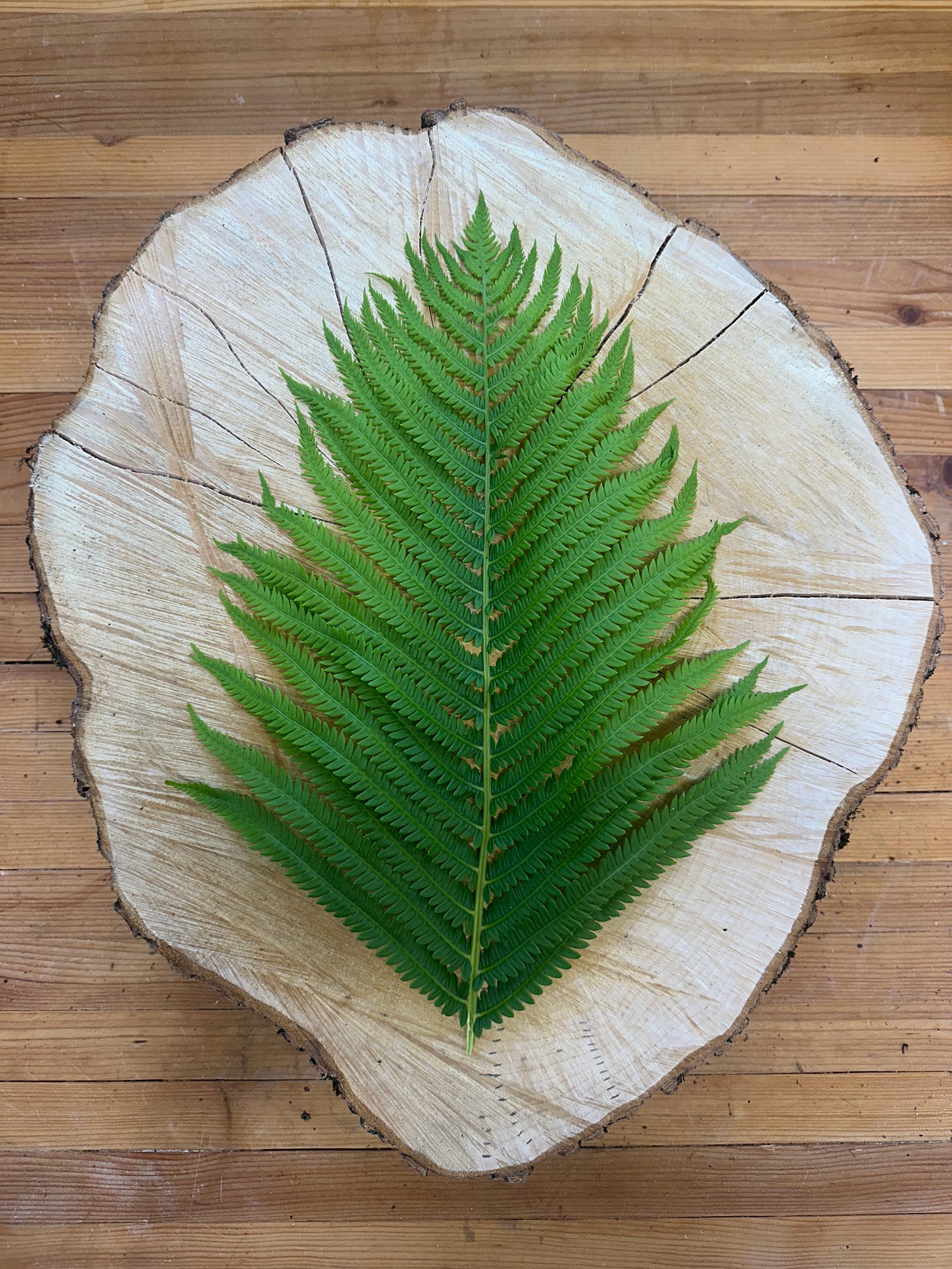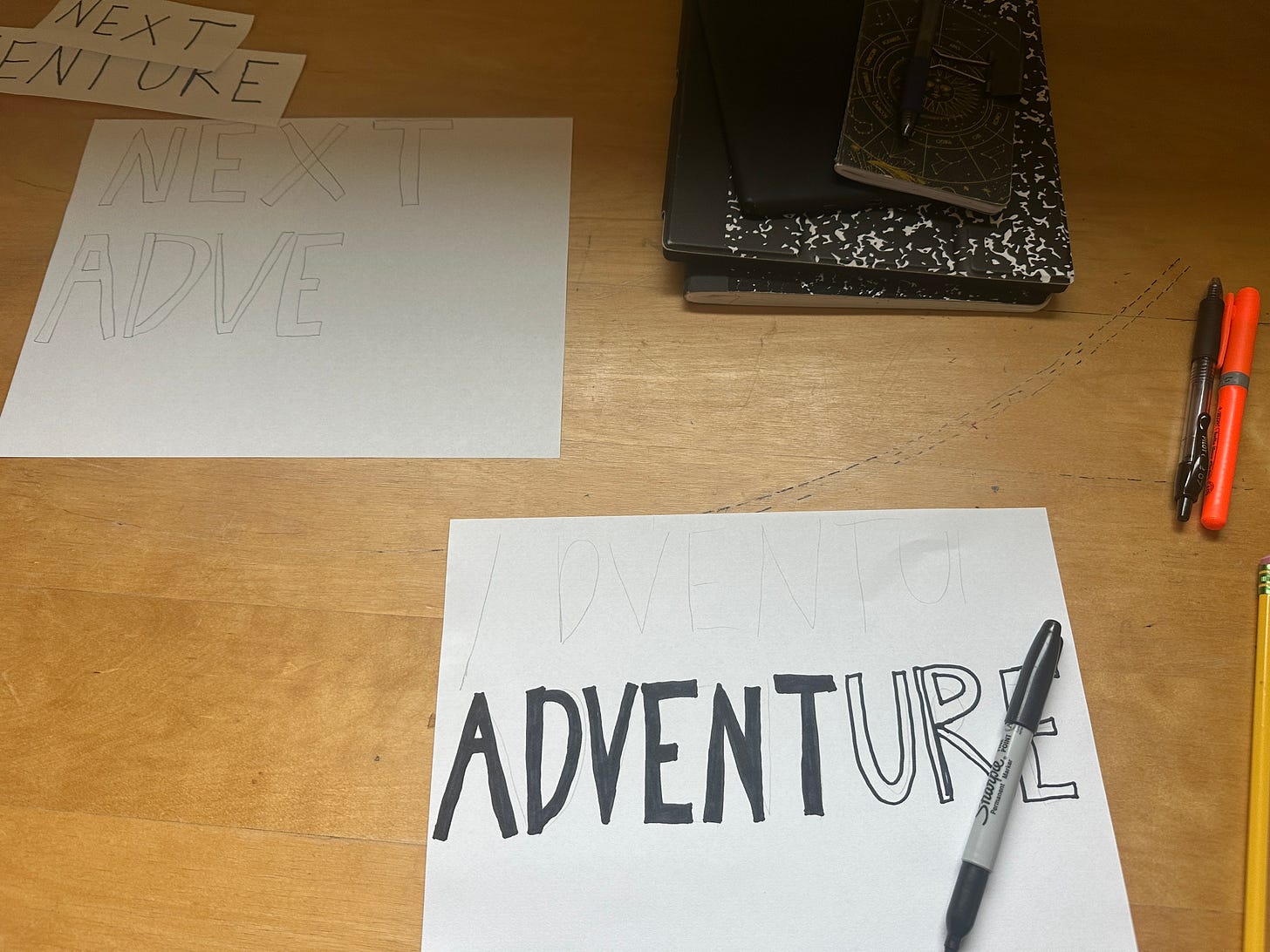Texture
Excavating through the superficial
Texture
the feel, appearance, or consistency of a surface or substance.

Even before artificial intelligence (AI), I yearned for the analog; to make things of substance a daily part of my life: the smell of a two-stroke chainsaw that keeps the bugs at bay, the coolness of a rock underneath a piece of moss. The problem with analog work is that it generally doesn’t pay as well as knowledge work. I’ve held both manual labor and office jobs; typically, the best way to get a raise is through a promotion.
Management in any sector often looks remarkably similar across industries. A Manager is required to sit and spend an inordinate amount of time on a screen to organize the labor they’re supposed to manage. Your job as a Manager, especially at large bureaucracies, is to insulate the upper-level management (your superiors) from the management work; you’re protecting the Director from the messy elements of humanity (e.g., team dynamics, project timelines). Managers frequently get stuck taking the blame while the Director takes credit for achievements. A Manager’s escape route is a promotion to Director, so that you can boss around a Manager of your own. Even if you’re an extrovert, the work of middle management is frustrating if you have hope of getting any actual “work” done or progress made.
Why go from working with your hands and body to instead working with your fingers (typing) and neck (straining)? Because it generally pays better.
Overall, AI will benefit humanity. Combined with quantum computing capabilities, these advancements will accelerate scientific progress in objectively positive ways. I’m not concerned about a doomsday Skynet scenario of machines taking over.
However, as a writer, I struggle with the implications of AI. If a large language model can successfully duplicate my tone, voice, and message, making it indistinguishable to a reader, where does that leave me? I don’t have a conclusive answer to this question. My initial response is to think of ways to make my writing as authentic as possible; for instance, what can I produce that isn’t producible by AI? Is my defiance the answer? Can this form of intellectual combat be an effective and sustainable path forward?
I attempt to make progress in answering this question every day.

In this personal and incremental battle to grapple with AI and writing, I decided to redo the Next Adventure logo. I’m not a graphic designer, so when Substack prompted me to provide a “publication logo” eighteen months ago, I likely took up Microsoft Word’s offer to generate an image as part of its image/branding creator tools. That’s AI, and now that’s all I see when I look at the Next Adventure logo: the softened edges and crispness appear everywhere people use AI to generate logos and other art (I’m no exception- I’ve used it for images).
This usage includes not only other Substack logos, but advertisements on the internet and advertisements in-real-life; I noticed a local roofing company’s yard sign that conveyed a message successfully (their company’s name and contact), but also embodied the same elements of the Next Adventure logo; both logos looked as if they had been “painted” by the same artist. It appeared cheesy, cheap, inauthentic; there was no texture. I don’t think this says anything about the quality of their roofing work, but the imagery itself struck me as, for lack of a better word, cringe.
I empathize: the owners need a logo and want to focus on the business of roofing, not fiddling with software or hiring a logo designer, just as I want to focus on writing and not wrestling with PowerPoint, Canva, or whatever other logo-creating software is out there. I feel the same cringeworthy feeling when I read something that reeks of ChatGPT; it functions too well, a failed simulacrum, the aspartame of the sweetener world. First, there may be a sprinkle: headlines and subheadings with robotic cadence. I’ll keep reading. But if the author succumbs to letting AI write the entire article, I likely won’t read them again. The precise texture and taste of pure cane sugar have yet to be replicated.
There’s a romantic synergy between the analog and the digital where I can reflect, research, and write only when it’s horrible weather outside and/or my body feels wrecked from physical work, a hike, or a hunt. During these moments, I yearn for the desk and have something to say, a passion to share. Yet, more often than not, the desk-based research morphs into something sinister. I give in to distraction; headlines and social media grab my focus. “Researching” becomes texting, then buying, then responding, then wondering what my initial question was.
I feed the algorithm; I become fodder for it. I’m not even a farmer in this system, but the hog that goes to slaughter. My clicks, eye movements, scrolls, time, and purchases get processed into dollars that I never see. It’s the pinnacle of efficiency: the conversion of sedentary focus into money in a colossal pyramid scheme of attention. These words you read are the bottom of this pyramid, but they will feed the algorithm, a trickle-up effect that will collectively (along with the work of other writers of Substack) benefit the owners of this platform. Exploitation of creators and artists isn’t new (it’s been happening in publishing since the industry’s inception), but the generative ability of AI is different because it makes stealing work monumentally easier than ever before.
I don’t have an answer or final policy on AI in writing, other than my general feeling to strive to write in a manner that is as uncreatable by AI as possible. Essentially, to keep AI on its toes and always keep it guessing, while also creating work that is interesting to read. Though the current models are very good, they aren’t quite there in terms of successfully capturing distinct voice, tone, and style. Yet the accelerating pace of advancement in AI means it probably won’t be long.
Below is a video of me picking the fern I used for the new Next Adventure logo:
A company called Machined claims to be an “AI Powered content platform that takes the hassle out of creating high quality content at scale.” Machined states:
“It can take a human writer up to 8 hours to write a ready-to-publish article of 2,500 words. 90% of that time is menial work, wasted productive hours. Machined can write human-level content in under a minute - including up-to-date factual information with powerful citations to authoritative sources. It can also generate a great cover image, construct the meta and publish everything directly to your site.”
Another company, Mechanize, is an AI startup that hopes to replace white-collar workers to create a fully automated global economy.
As the digital world pulls us in, fueling an addiction to the screen, AI will accelerate the capabilities of these devices, subsequently strengthening this pull. The next stage in the iterative process between human and machine is for us to pull back; will our days be filled with watching footage of someone building a treehouse on TikTok? Or will we build the treehouse ourselves? Will we write newsletters about writing newsletters, or write newsletters on the topics we’re passionate about?
What if these models successfully replace artists and creators? What if, in a dark twist, humans subconsciously created AI to force ourselves back to the analog and away from the chair and screen? Perhaps we should welcome AI with open arms since it may ultimately force us to experience the world around us again.
There isn’t an AI model that can cut down a cherry tree, buck it up, split it, and hand-carve a bowl from it. Chat GPT cannot put my canoe on my truck or build bookshelves. It can’t shovel stone or pet my dog. It will never feel a sunburn or smell freshly dug earth, get a splinter, or try to get the dried blood off a spent broadhead.
These are the experiential elements of art that AI cannot replicate. My goal is to live these moments and convey texture on the screen (and paper) through words and images, hopefully one of many voices that serve as a counterbalance to the faceless, soulless, humanless, and texture-deficient “content.”
This logo is clunky, rough, and imperfect, with inconsistently sized letters and an overall oblong shape. But I also see chainsaw marks, the checking of the wood, growth rings of a sixty-year-old tree, a freshly-picked fern, and my wonky lettering. It lacks the softness and cleanliness of the old logo, and that’s because each component of this design tells a textured story about an analog experience.
*Read about my AI usage policy here.





Best Logo I’ve seen in quite some time. It in some way forced me to look at it for more than a moment.
Can’t tell you how much I appreciate this. The irony’s not lost on me—having just made the case for AI in the classroom in a recent essay, I could’ve just as easily written the counterpoint. I told someone this week: there’s a moment in my day when I can feel the pull away from technology in my bones… and yet, I’m more tethered to a device than ever. You nailed this one. Beautifully said and designed, Jesse.
And Happy Father's Day.